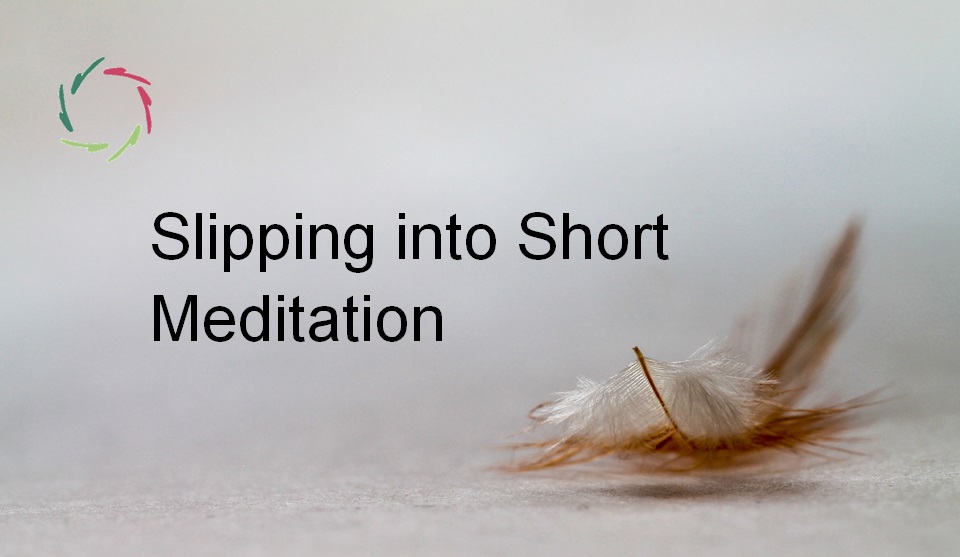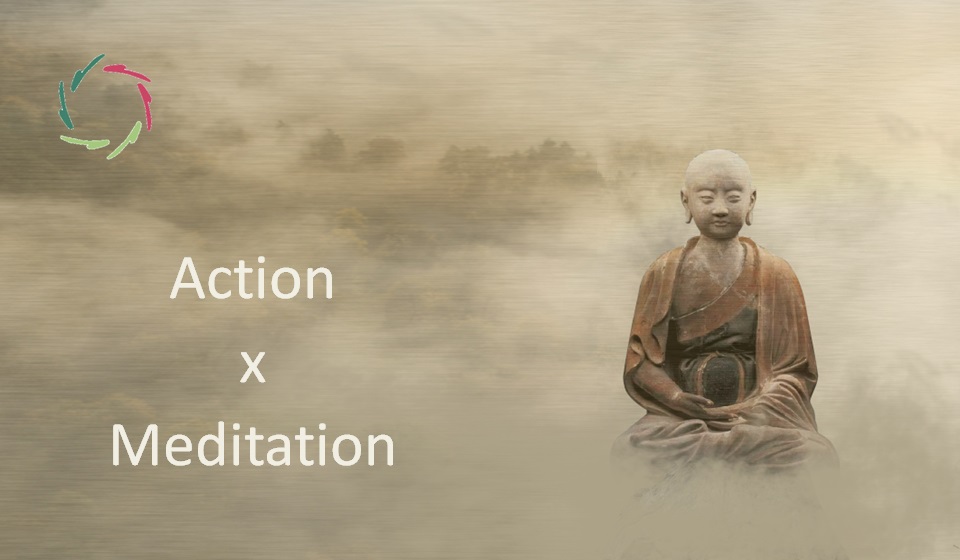Leaders’ Meditation

Meditation can play a transformative role in leadership, making for a better and more sustainable leader.
Meditation in the broadest sense
is the head-on search for deep meaningfulness, which is quite special. [see: “The Meaning of Meaning“]
The outer form can be sitting on a cushion, a walk in nature, or a week-long retreat. It can also be a deep conversation or coaching, a workshop in Open Leadership, or a day at work.
The most formal meditation, of course, is just sitting. No counting, no focusing, just being. This can be a very constructive element, especially in interplay with other elements of meditation.
Profound power of meditation to leadership
comes from a spontaneously going back and forth between more and less conceptual thinking. One can learn to ‘perform’ this by practice and specific effort. In meditation, the effort is peculiar – unlike other learning.
Eventually, this back-and-forth heightens charisma by connecting the leader to his ‘deeper layers.’ Note that this happens at a symbolic level ― not easy to get and realize. Charisma is a ‘given’ (grace) that can take much effort. It is elusive, real, and effective.
There’s a reason why in some cultures, becoming a meditative expert takes years. Meditation is, indeed, exceptional. Be that as it may, any leader can become a better leader through meditation, also in ‘normal’ life – no mountaintop, no monastery.
No denigration of the meditation either. It can only work if it is taken seriously, especially in the absence of extraordinary tools.
Executive coaching can be key to this.
Don’t expect methods or techniques as belonging to a purely conceptual world. Expect someone who listens from the inside, with due respect, in deep-to-deep communication.
Expect words that you remember long after you have forgotten them.
From chaos to Openness
Chaos (entropy) is naturally avoided in the world of the living. It is what life initially needed and still continuously needs to emancipate itself from. The essence of life is to avoid overwhelming chaos. On the other side, life also doesn’t thrive in a purely mechanical setting. Thus, real-life happens in the middle-world between chaos and strict order in a continually challenging balance. Here, one can find deep meaningfulness within substance and change or ‘growth’.
A leader’s meditation – as described – is a search for this middle-balance for oneself and the broad environment, the organization, the world. Meditation Opens the domain in which to be profoundly alive. Opening this domain does not happen through destroying the chaos, nor through getting rid of it. [see: “Open Leadership: from Chaotic to Open“]
A health-related example is chronic pain. The pain as such may be a communication-from-inside. Treating it as an unconditional enemy makes it chaotic – also neurologically seen – and hopelessly painful. Treating it as a friend is challenging, but much more interesting. It demands a similar kind of inner connection ― something very different from easy, but meaningless medication.
Finding the balance in a broad setting is the sustainable and meaningful way.
As you see, it is an ongoing effort, not one fix. Everything is always in motion, making the balance necessarily a dynamic one. One can be quite out of balance sometimes, then find it again. This act of losing and regaining balance makes the meditation stronger. Also in this, good support may be crucial.
Eventually, it’s a continuous meditation, a never-ending way of life, bringing form to the formless and formlessness to form, a leader’s sacred space where wisdom is gained.
Change and transformation.
A manager changes things, which may be excellent if well done and to good purpose.
A leader, through efforts in meditation, transforms from the inside. A congruently Open Leader is thus naturally oriented to sustainability, transforming beyond oneself also in time, continuing to inspire others.
As a legacy leaving a blessing.


